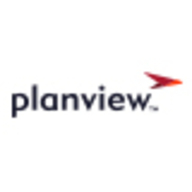

Find out in this report how the two Project Management Software solutions compare in terms of features, pricing, service and support, easy of deployment, and ROI.
The support was good with no challenges.
In terms of scalability, I would give JIRA Portfolio a ten out of ten.
In comparison to Planisware, it is very stable.
Making the report creation process faster and easier with drag-and-drop features would be beneficial.
It is not considered expensive in the market.
The reporting feature is comprehensive and easy to use, which aids in planning and forecasting.


Jira Portfolio is an agile roadmapping tool designed to help teams build plans, envision the big picture, track progress, and share the process with stakeholders.
Jira Portfolio is planned based. A plan in Portfolio is a complete view of the tasks, teams, and release dates for your Jira projects.
Once you start to create a plan, there are three main factors you need to define:
With Jira Portfolio, you can create a visual timeline to gain visibility across each of your teams and projects in a single place from a granular level and review cross-team and cross-project dependencies to prevent bottlenecks. This visibility can help you plan realistic release dates and manage your team’s capacity. The solution allows you to try out different scenarios with your roadmap and resources to help guide your decision making. Once you have a solid plan, you can easily integrate with Jira Software and commit your changes.
Jira Portfolio allows managers to easily add team members. The tool’s powerful scheduling algorithm assigns tasks to teams while taking priorities and dependencies into account so it can create a realistic forecast for project completion.
Jira Portfolio Benefits
Some of the top benefits of using Jira Portfolio include:
Reviews from Real Users
Jira Portfolio stands out among its competitors for a number of reasons. Two major ones are its roadmap creation tools and its flexibility.
Meeta L., a lead product manager at a tech vendor, says, “The valuable features of the JIRA Portfolio are the customization it provides which is very useful and the Agile project management capability.”
Juan P., a senior IT project manager at Avantica, writes, “Portfolio helps us increase the visibility of projects' status and management with remote workers who make up most of the company.”
Planview PPM Pro centralizes the management of resources and projects while facilitating governance and providing visibility for improved decision making. Planview PPM Pro provides the ability to collect, prioritize, and execute projects so that PMOs can focus their resources on the work that delivers the most value.
Planview PPM Pro helps businesses get out of managing projects in complex spreadsheets or tools so they can gain visibility into all work and resources. For informed decision making, use Planview PPM pro to streamline project efforts into a single source of truth. The solution gives businesses the ability to align their centralized project portfolio to achieve business outcomes through financials, projects, and resources.
Planview PPM Pro Features
Planview PPM Pro has many valuable key features. Some of the most useful ones include:
Planview PPM Pro Benefits
There are many benefits to implementing Planview PPM Pro. Some of the biggest advantages the solution offers include:
Reviews from Real Users
Planview PPM Pro stands out among its competitors for a number of reasons. Some of these include its exceptional customer service, its easy customization, and its real-time dashboards. PeerSpot users take note of the advantages of these features in their reviews:
Jai A., IT Project Manager at Orange Business Services, notes, “For every project, we have to establish timelines, set deadlines, and estimate the completion date of a particular task. PPM Pro notifies us if we are approaching the deadlines, and we can customize this to give notice two or three days in advance.”
Prateek A., a Manager at NISG, writes, “It helps you visualize all your strategic plans and the KPIs. It provides that information on a unified dashboard, in which you can track all your resources and the portfolios. It helps senior stakeholders and executives with clear reporting about project intake and demands, in real time."
We monitor all Project Management Software reviews to prevent fraudulent reviews and keep review quality high. We do not post reviews by company employees or direct competitors. We validate each review for authenticity via cross-reference with LinkedIn, and personal follow-up with the reviewer when necessary.